Take a walk around Fullerton Arboretum, an oasis to grow the mind
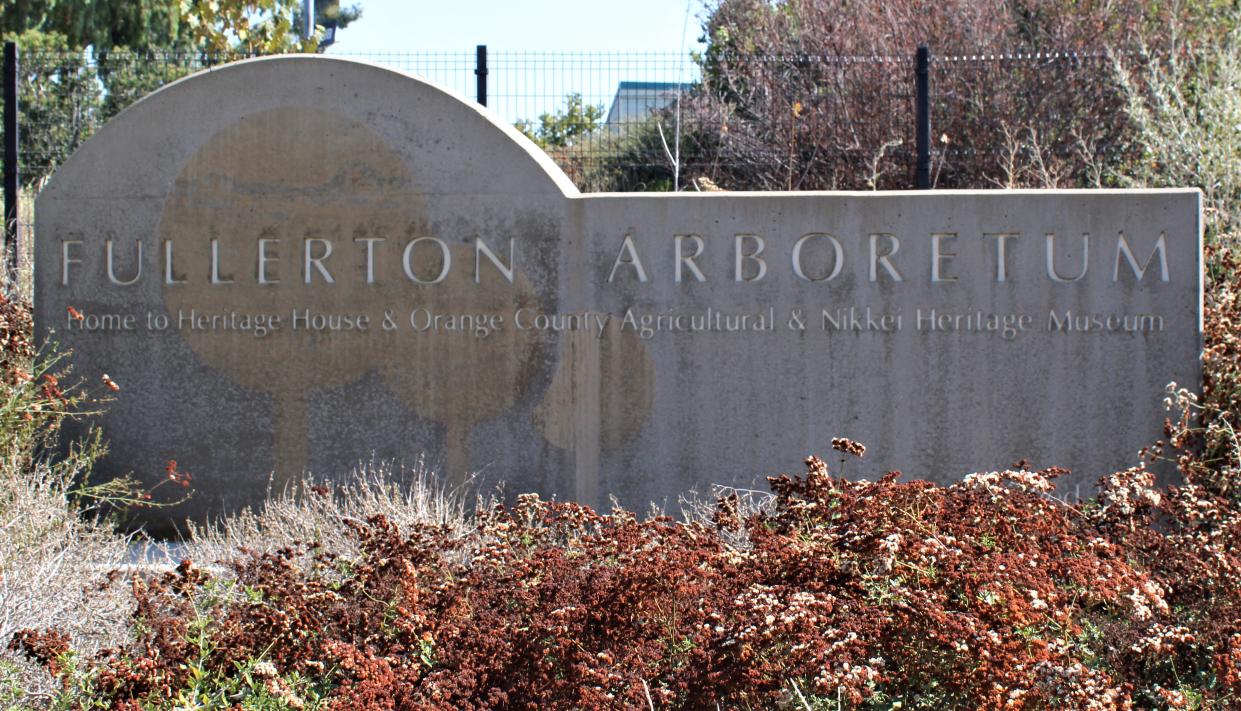
According to Nika, guardian of the entrance of the Fullerton Arboretum, a lot of people visit the 26-acre site where lots and lots of plants grow.
I’m not a botanist, but I know when I see many plants.
“During the week, we get dozens of people taking walks, jogging or studying specific plants for a class at the university,” Nika said.
The arboretum is northeast of California State University, Fullerton.
As I was chit-chatting with Nika, a woman jogged by pushing those three-wheeled contraptions that always looked perilous to me.
Give me four tires on the ground when I push a baby around. Three wheels — that is an accident waiting to happen.
An older couple strolled by holding hands — it was sweet.
“During the weekends, we get crowded,” Nika said.
“How busy?” I asked.
“I don’t have a specific number of people coming here, but it is busy. Everyone seems to love this place.”
I bade Nika adieu and wandered down the dirt path into the arboretum.
More from Breyer: Huntington Library in San Marino is a relaxing oasis built by robber barons
Walking through an arboretum had not been on my schedule, but I had business to complete in Fullerton and arrived two hours early for my appointment unintentionally.
Driving from the High Desert to Fullerton is approximately 75 miles and should take an hour and a half unless Laureen is driving. Then, perhaps 40 minutes would do the trick.
Any person driving south on the Cajon Pass in the last 100 years realizes that suspected travel times to a place "down the hill" is merely a suggestion.
“Waze says we’ll be there in 30 minutes,” a friend will tell another friend as they drive happily along Interstate 15.
Suddenly, red taillights by the millions erupt out of nowhere just at the summit of the Cajon. Waze then reroutes and advises the trip to Rancho Cucamonga will now be three days.
“Are there accidents? A fire ripping across the roadway? A Sasquatch sighting?”
“None of those on the screen.”
“Then what?”
It is a Caltrans mystery.
So, when driving down the Cajon, which I do pretty often, I pack an overnight bag of my favorite foods and let Laureen know if I will return soon.
But, on this day — I was two hours early for my appointment.
No traffic along Interstate 15 or 210.
What was I to do?
Find someplace I had not visited before.
And that is how I found myself at the Fullerton Arboretum.
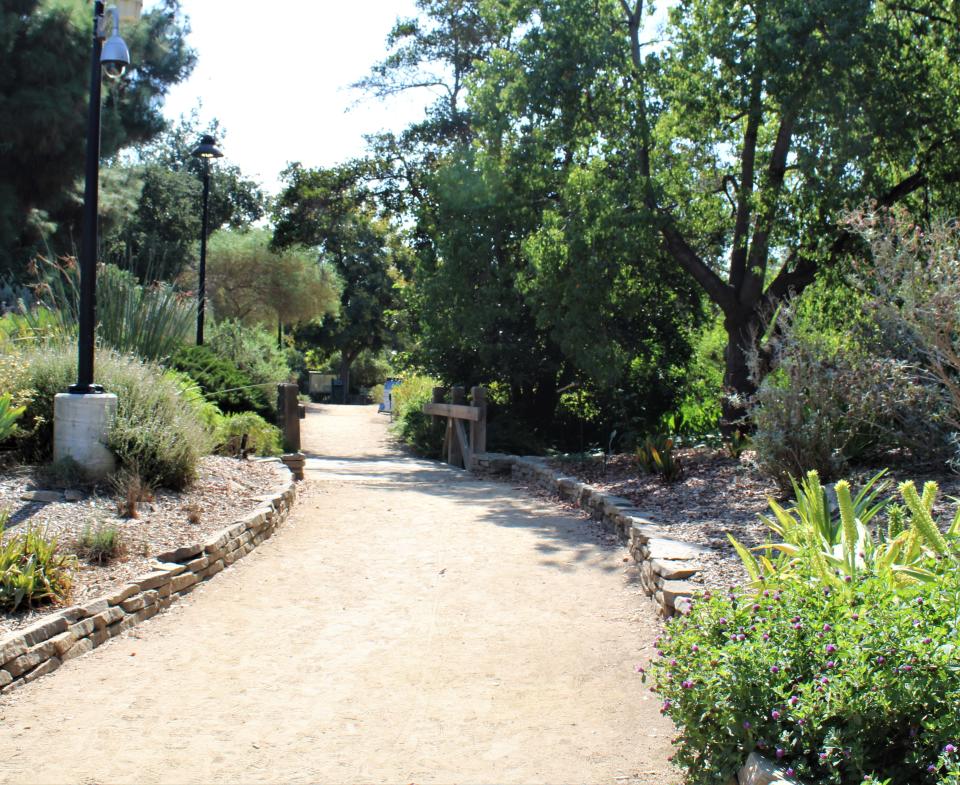
The concept of the arboretum was conceived by Dr. David Walkington and Dr. Eugene Jones, along with some other staff and students at the university, in 1970. It would be an excellent place for students to study botany and for the locals to enjoy walking through.
An orange grove on the northern end of the campus had a disease known as quick decline.
I personally know this disease — it occurs each morning as I tumble out of bed.
The grove had once been part of the Gilman Lands.
Richard Hall Gilman came to this part of Southern California in the 1870s and wanted to be involved in agriculture. The lands he found suitable for planting citrus were in the vicinity of Placentia.
In 1872, he purchased acreage and, five years later, planted the first five-acre grove of Valencia oranges.
He is known as the father of the Placentia citrus industry.
Richard Gilman, along with his wife and four children, lived on the lands where he grew oranges, and it was a happy time for all of them to be surrounded by such beauty.
His daughter, Helen, wrote about life there: "Pomegranates wound a big horseshoe yard where grass billowed so deeply that children could hardly navigate. Cypress swooped out from the shoe to a willowed ditch, forbidden. It was the terror of every mother living on Placentia Avenue. Dark red roses ran along the walk that centered the yard. Among them were narcissuses that, with the winter rains, set yellow cups to white saucers. Blue iris joined the roses in the spring, and peacocks paraded."
That was some detailed prose, which reminded me of my yard in the High Desert.
Soon a group of folks formed the Arboretum Committee to create a wonderful place where people could enjoy the outdoors while also learning about protecting the environment. Some big mucky-mucks noticed the effort, and the committee won a Disneyland Community Service Award.
In 1971, the Associated Student Body started a fundraiser to try and protect the dying orange trees.
The trees were doomed, so they were cut down, roots removed, and a new project began.
This one planned to start organic gardening plots to demonstrate the environmental values of this sort of gardening.
As with most things, the plan enlarged, and the current Mission Statement for the arboretum explains it fully:
"The mission of the Fullerton Arboretum is to support the academic mission of CSUF with a world-class living and historical collection and to provide learning opportunities for every stage of life, extending our resources into the local community and around the globe to foster an appreciation for plant conservation, botanical research, and horticulture."
This mission statement is plain to see as I wandered the 26 acres and took in an awesome array of plants and trees being cared for at the arboretum.
There were hundreds of plants — California Copperleaf, San Diego Ambrosia, False Indigo, Indian Milkweed, and Coyote Brush, to name a few.
And you are speaking of coyotes. There was a sign warning the visitor about possible coyotes in the vicinity and what to do if they encounter one.
Being from the High Desert — I scoffed.
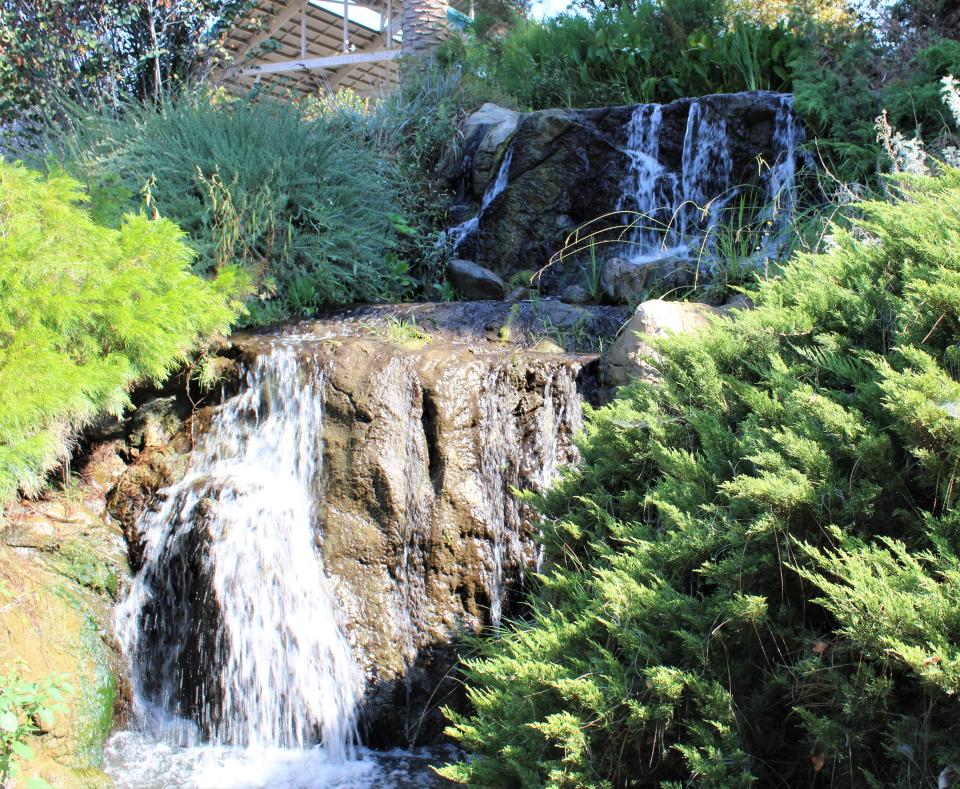
There are also a lot of trees to walk beneath — White Sapote, African Yellowwood, Yunnan Wintersweet, Mangrove Date, Oak, and so many more I got tired of craning my neck to look at their height all.
Wide dirt paths allow the visitor to saunter within the grounds. A bubbling creek winds through the shade-covered grassy knolls with ample picnic tables and benches to relax upon. Waterfalls pour over large boulders into a deep and cooling pool.
It was easy to understand why so many locals and non-locals would drive to this oasis within a large suburban area. Though there was a prominent university next door, the quiet of the arboretum was not disturbed.
Large tables were set out with scientific equipment next to the potting shed. No one was around, so I peaked at what was being studied beneath the microscopes.
I have no idea. It probably has something to do with plant life.
But not everything is on the exterior.
The OC Agricultural and Nikkei Heritage Museum has various exhibitions throughout the year that include lectures, photography/art exhibits, guided tours, and the like.
The visitor center is where the arboretum’s purpose is discussed through photographs, history writings, quotations from present and past folks who worked there, and maps showing the paths around the site.
A beautiful old home, the Heritage House, is located on the grounds.
It was built in 1894 by Dr. George Crook Clark, one of Fullerton’s pioneer doctors. Located initially at Amerige and Harvard in the center of Fullerton, it was painstakingly moved to the arboretum in 1972.
The reason? It was going to be demolished for something new and probably 70ish. How gauche.
The home was built in the Eastlake style. I had to look that up.
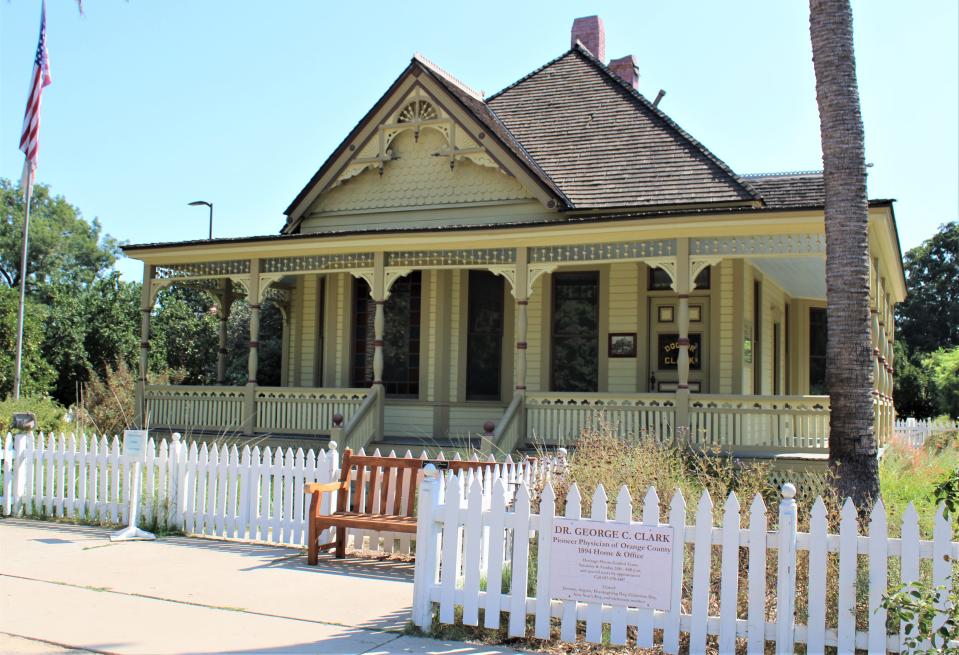
It was a 19th-Century architectural and household design reform movement created by British architect and writer Charles Eastlake. Part of the Victorian period in terms of broad antique furniture designations.
No idea.
In short, it is also referred to as the Queen Anne style.
No idea.
I did love the house and the wrap-around porch where the doctor probably sat in a reed rocking chair, yelling at his patients as they strolled down Harvard Street.
“Yeah, I went to Yale,” he may have wailed. “I just happened to get a good price on this Queen Anne on Harvard.”
The arboretum is a spectacular place to wander, and so I did. Past this garden and past, that garden showcases plants and trees from this location to that location from around the globe.
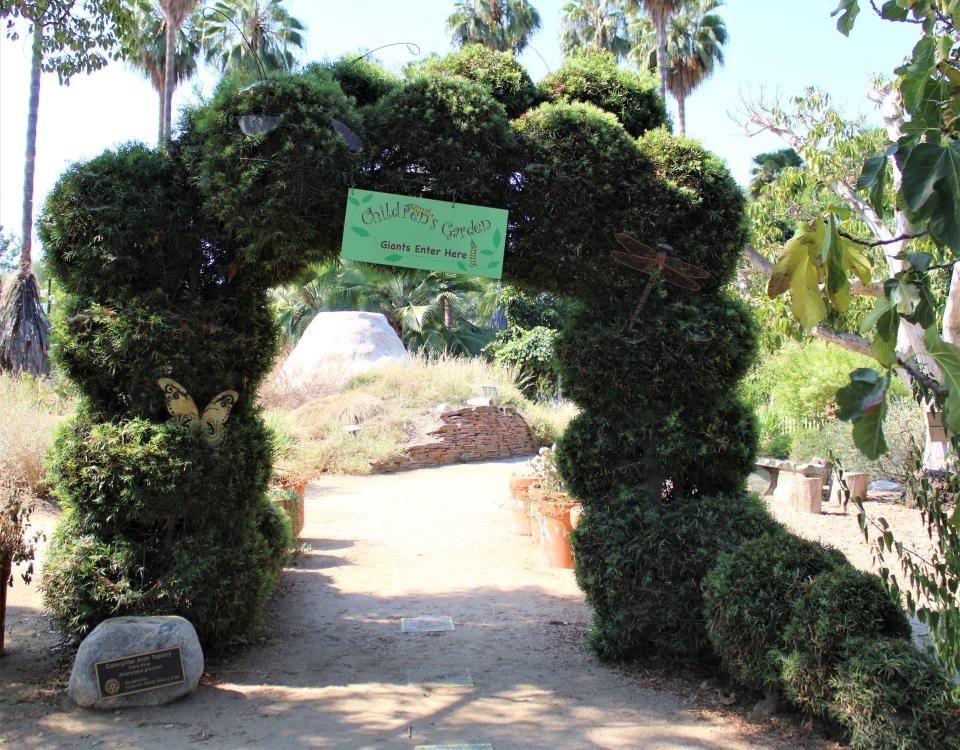
Desert gardens, Australian gardens, Palm tree gardens, and one caught my fancy: the Children’s Garden.
Walking beneath an arbor of some plant, I found myself in a place children would love. Things to walk through. Things to study. And just a great place for the growing mind.
There were also lovely benches for parents to rest while their children ran around growing their minds.
My appointment was nearing, and I was disappointed the time was upon me to leave.
This unexpected adventure was more than worthwhile.
For further information: https://fullertonarboretum.org/about.aspx
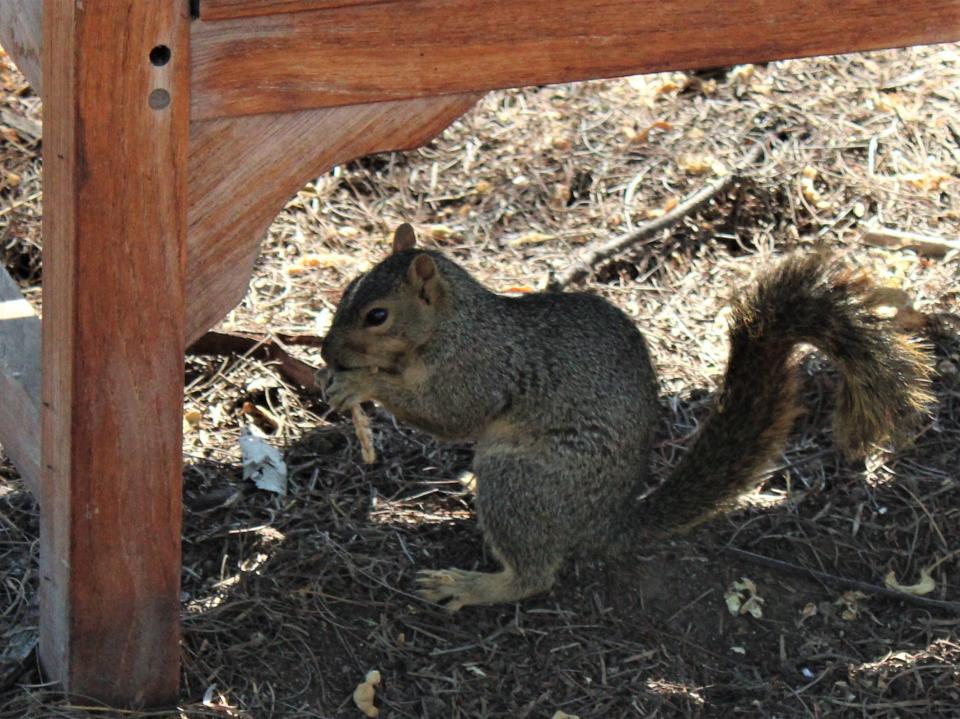
This article originally appeared on Victorville Daily Press: Fullerton Arboretum, with its hundreds of plants, is an oasis to grow the mind

